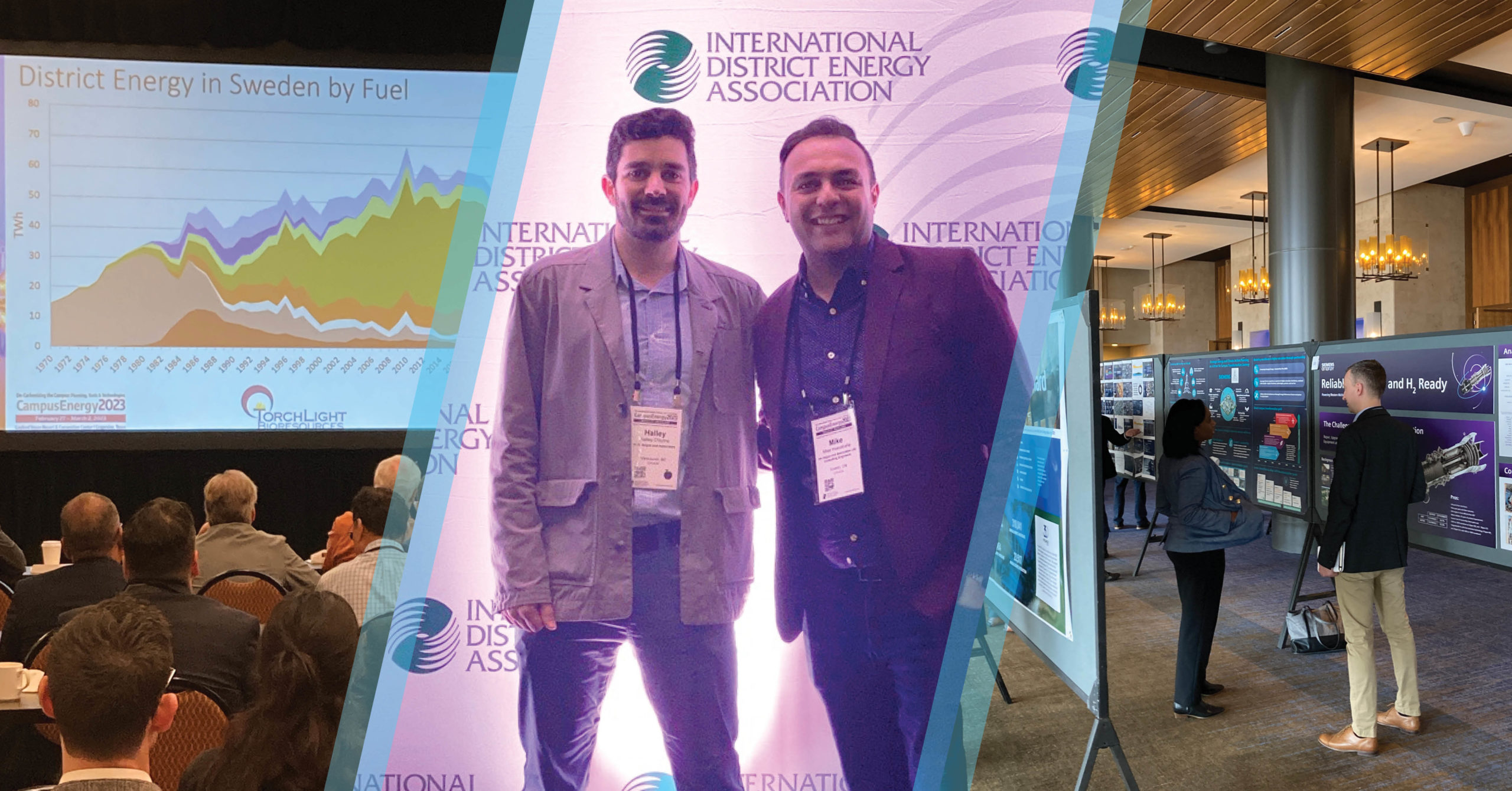
Two of our energy specialists took part in last week’s IDEA (International District Energy Association) Campus Energy 2023 conference in Texas – Mike Hassaballa and Halley O’Byrne. The conference provided a forum for innovative approaches to solving energy and decarbonization needs at the district scale. Here are a few of their conference takeaways on campus district energy (DE) systems.
Heat pump technology
Several manufacturers are warming up to the idea of bringing higher temperature heat pumps, traditionally used in industrial applications, to the commercial/institutional sector at reasonable costs.
Biomass
Biomass from sustainable forestry operations could offer a good, cost-effective alternative to sectors currently using dirty fuel sources, such as oil heating. This can be effective in areas where natural gas and electricity are not available at low cost, such as in eastern Canada, and could potentially provide a useful forest management tool. Additionally, a properly-designed biomass energy-generation system, in conjunction with carbon sequestration and a well-managed fuel harvesting program, can result in a carbon-negative solution, with potential to recover costs via offsets.
U.S. Inflation Reduction Act
This act in the US offers a huge incentive for low carbon solutions. What was striking to us is the proposed hydrogen tax credit of 0.6 $/kg. For those looking at hydrogen economics, this is significant.
Low Carbon Financials
Many case studies and presentations at the conference stressed the fact that effective low carbon energy master planning requires extensive work on the business case - from cost to life cycle cost analysis and financial risk analysis. This process extends beyond the financial to include social aspects such as broadening awareness and stakeholder mobilization, and that professional facilitation is required to make the social aspect work.
Next Gen District Energy Technology
Some institutions are starting to look into next generation solutions for transitioning to more sustainable heating and cooling infrastructure, such as small modular reactors (SMRs) and micro-nuclear power plants (think shipping container size and capacity as low as 1MW), as well as Deep Geothermal. However, there is alack of awareness that needs to be addressed and work to be done on building up basic knowledge of what these technologies are, their costs, and relevance to North American markets. Though these solutions are technically feasible, safe, and potentially economical, establishing appropriate regulatory frameworks and garnering sufficient public awareness do pose a challenge to their implementation.
Existing Infrastructure
There were also affirmations of more developed pathways to electrification, such as efficiency improvements for existing plants and optimization strategies to incrementally decarbonize. These approaches all take into account local needs, regulatory conditions, resource availability, incentive programs and other constraints and tools that help define the appropriate combination of solutions for particular sites.
Across the technologies and project examples, there were some common themes. Establishing current baseline performance to set appropriate targets and benchmarks, proper master planning and feasibility analysis, stakeholder engagement (including garnering public acceptance), alignment of values and interests, and diligence in creating any project are all needed to achieve successful outcomes, regardless of the technology involved.
For more information on HH Angus’ low carbon/net zero carbon solutions, please contact lowcarbon@hhangus.com.

Mike Hassaballa, P.Eng.

Halley O’Byrne, P.Eng.
